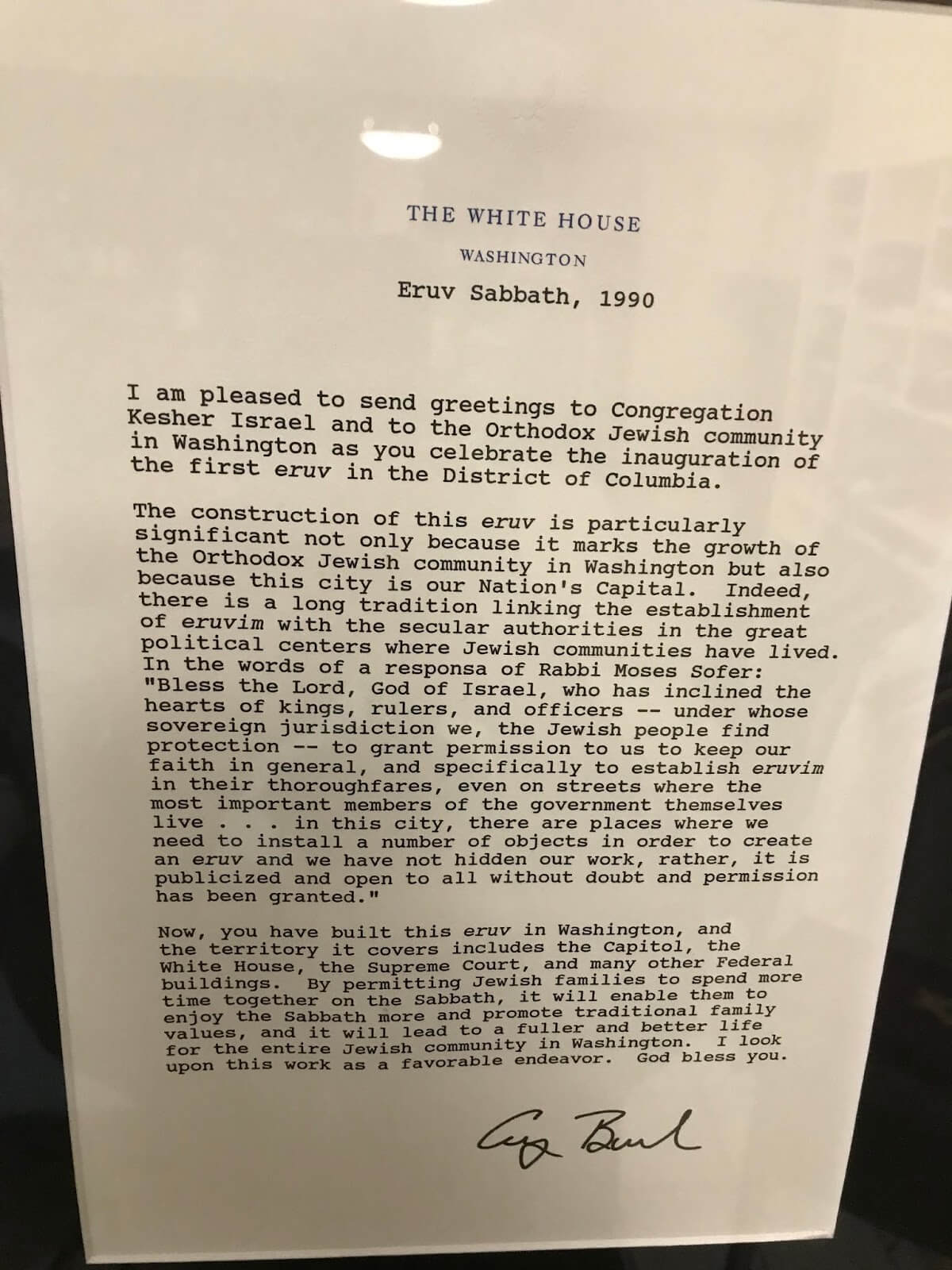“Is there an eruv?” is one of the first questions on the lips of observant Jews when seeking to move to a new community. Read on to learn why, and in honor of President’s Day, discover how and why a U.S. president was involved with one community’s eruv.
One of the 39 prohibited acts of Shabbat, known as melachot, is carrying, or transferring an object from one domain to another. This melacha differs from the other 38 in a few ways, one of which is that the sages promoted a loophole to allow for carrying, pushing baby carriages and transferring domains, by transforming “public” domains, where carrying is proscribed, to a large “private” domain, where these acts are permitted. This is accomplished by encircling the public domain with what Jewish law would call a wall. Jewish law offers four types of “walls” or legal barriers: natural walls such as river banks, mountains, actual walls, and what is called tzurat hapetach, the outline of a doorway. The latter allows for a wall to be comprised of a series of “doorways,” so long as each “door” has the minimal form of a doorway and a lintel. Often telephone poles and utility wires can be used. The word eruv comes from the Hebrew root to mix, i.e. mixing the private and public sectors.
The sages mandated that all those residing in the area of an eruv must symbolically become unified. There are two ways to accomplish this. One is by collecting a food item from all Jews in the area, usually facilitated by using communal funds to purchase a box of matzah (matzah remains edible for a long time). The blessing over creating a communal eruv is typically made annually over this box of matzah. The second method of unifying all residents – Jews and non-Jews – is by renting the area from the local jurisdiction for the purpose of Shabbat carrying and transporting. Often this “rental” takes place through a mayoral proclamation for 99 years at the price of $1.
What happens if the area that you intend to surround with an eruv includes Federal land? In 1990, Kesher Israel Congregation of Washington, D.C. endeavored to build an eruv, but their plans included territory owned by the United States government. The synagogue reached out to U.S. President George H.W. Bush, who provided a letter granting them permission. President Bush wrote, “Now you have built this eruv in Washington, and the territory it covers includes the Capitol, the White House, the Supreme Court, and many other Federal buildings. By permitting Jewish families to spend more time together on the Sabbath, it will enable them to enjoy the Sabbath more and promote traditional family values, and it will lead to a fuller and better life for the entire Jewish community in Washington. I look upon this work as a favorable endeavor. God bless you.”

Copyright © 2019 NJOP. All rights reserved.
 Print This Page
Print This Page